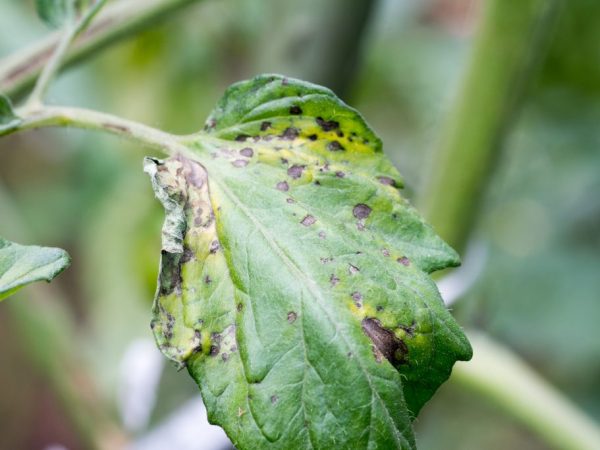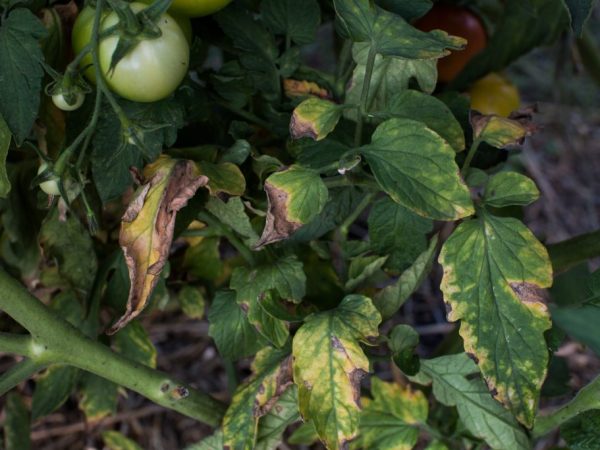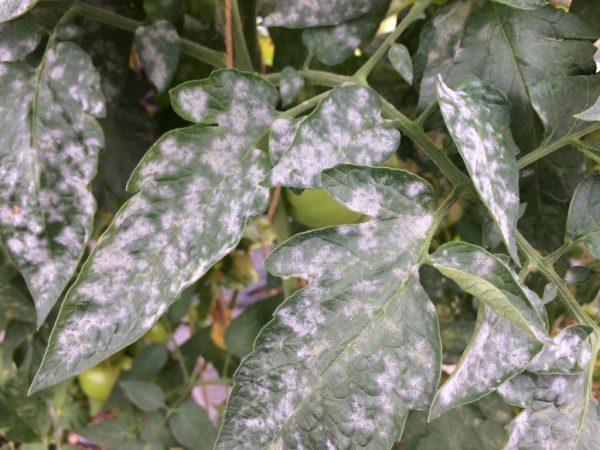How to treat stains on tomato seedlings
Cultivation of tomatoes begins with the germination of seedlings, but the first steps are not always without problems. Spots on tomato seedlings pose a great threat to the entire agrotechnical process.

How to treat stains on tomato seedlings
The spots indicate a disease of the seedlings.
Sun damage
To grow healthy seedlings, certain conditions must be observed.
The boxes of seedlings must be provided with access to sunlight. The boxes are placed on the south-facing windows. Direct sunlight can cause seedling burns, as evidenced by large white spots on the leaves. Most often this happens if the young sprouts have not yet had time to get used to strong lighting. More mature seedlings get sunburn when the weather was cloudy for a long time before clear weather. Seedlings are protected with newspapers, thus shading. Other lightweight materials are also used.
Watering the seedlings can be harmful, especially when water drops fall on the leaves. They act as lenses in direct sunlight.
Prophylaxis
To prevent burns, the following measures are used:
- From the beginning of the emergence of sprouts, the vessel where the seedlings are grown is installed on a sunny windowsill.
- Watering is carried out in the early or evening time, when the sun's rays are not direct.
- Before planting in open ground, the plants are taken out into the street. The residence time is gradually increased. Thus, the seedlings get used to the sun.
If the plants still get burned, it will not work to reanimate the affected areas, but you can try to bring the bushes out of the stress state. To do this, the sprouts are treated with the "Epin" preparation: 40 drops of the agent are diluted in 5 liters of water, after which the plant is sprayed. The procedure stimulates the growth of seedlings and increases their immunity.
Bacterial lesion
Spots on tomato seedlings can be caused by a bacterial infection carried by seeds or soil. It causes bacterial black spot. Oily dots appear on the plants, eventually reaching a size of 1-2 mm and acquiring a dark, almost black shade. The spots are formed mainly at the edges.
Bacteria enter the leaves of the plant through natural holes or due to mechanical damage. Their reproduction is facilitated by high air humidity and temperatures above 25˚С.
Prophylaxis
In order to prevent this disease, seeds are treated. The soil where they are sown is cleaned of plant residues.
Black spot is fought with chemicals. They use Bordeaux liquid, Hom and Oxyhom preparations.
Fungal infection

The disease can affect all seedlings
Many plant diseases are caused by fungi. They fall on seedlings and begin to multiply.
Alternaria
The disease has another name - dry spotting. Spots on the leaves of tomato seedlings when infected with a fungus first appear from below. They are brown, rounded.A little later, they become large and acquire a grayish tint. They have a velvety surface. As the damaged areas increase, the leaves dry out completely. The stem of the seedlings may also suffer. It becomes covered with the same spots, but darker, dries or rots over time.
The best conditions for the reproduction of the pest are temperatures of 25-30 ° C and high humidity. The pathogen persists for a long time on plant debris, is transferred in windy, rainy weather.
Prophylaxis
In order to prevent the rage of the fungus, you must:
- Treat the seeds.
- Choose varieties of tomatoes that are resistant to Alternaria.
- Maintain the appropriate temperature in the room where the cultivation takes place. Avoid increasing air humidity. Conduct frequent ventilation.
- Remove residues of garden crops and weeds from the sowing soil.
To defeat the disease, the chemicals Kuproksat, Thanos, Quadris, Metaxil are used. The treatment is carried out in the form of spraying.
Septoria
If spots of a grayish-white shade with a dark border appear on tomato seedlings, the plants suffer from white spot (septoria). First, the lower leaves are affected, small dots become visible on them, then they increase, a black speck appears in the middle. The leaves turn brown, dry up and fall off.
Tomato seeds are not affected by spores of septoria.
The disease feels great in warmth and high humidity, so such conditions should not be allowed. You can freeze or steam the soil: this has a detrimental effect on the fungus.
Prophylaxis

You need to take action at the first signs of defeat
If you start a disease, you cannot save the plant. This is why prevention is so important. At the first signs of the disease, all seedlings are treated with a 1% solution of Bordeaux mixture. You can also spray with fungicides "Thanos", "Title", "Revus". Experienced gardeners recommend completely removing damaged shoots, and treating the soil with a solution of potassium permanganate.
Cladosporium
Brown olive spot is another name for this disease. With her, tomato seedlings are covered with spots on the leaves with a yellowish-gray tint. The reverse side of the leaf is covered with an olive bloom. Over time, spots form whole areas, the leaves turn brown. During this period, the spores of the fungus mature and can move to healthy seedlings. The action of this pest leads to the death of plants. Although the stem is not affected, the photosynthesis process stops.
Prophylaxis
To prevent cladosporia from affecting seedlings, you must:
- do not overmoisten the soil: it is enough to water the bushes every 2 days, the soil should be moist, but without stagnation of water at the roots;
- keep the room temperature below 25˚С;
- dressing seeds.
To combat the disease, substances containing copper are used. It can be a Bordeaux liquid solution. The drugs "Hom", "Poliram", "Abiga - Peak", "Bravo" will be effective.
Different types of fungi do not like dairy products, so for all fungal diseases, you can use folk remedies prepared on the basis of milk. As a treatment, a solution of whey (1 liter per 10 liters of water) is suitable. This liquid can also help: 10 liters of water, 1 liter of milk and 30 drops of iodine. They are sprayed.
Viral lesion
Seedlings can be attacked by disease caused by viruses. The pests that carry them settle on the plants and infect them.
Mosaic
It is carried by aphids and thrips. Initially, dots appear on the leaves, after some time - light yellow spots, which alternate with yellow-green dark and light tones. The leaves are deformed, become variegated and wrinkled, growths appear. Then they completely curl up and die off.
The virus is resistant to drought and cold weather. The pathogen can be contained in garden tools, in the soil, in weeds.
Prophylaxis
To prevent this viral disease, it is necessary to soak the seed in a urea solution (1 tsp for 1 bucket of water) or 1% potassium permanganate solution. The remains of plants should be removed from the soil, because the virus does not die for a long time and remains on them.
The soil can be steamed, but this complex procedure is only suitable for growing plants in a balcony. In this case, the soil is poured with boiling water, after which the earth is considered cleaned.
Infected areas of seedlings are removed and burned, the rest are treated with a weak solution of potassium permanganate. For this purpose, the chemical preparation Pharmayod-3 is used.
Streak
If the seedlings are covered with red-brown stripes, it suffers from a streak. With this disease, not only leaves are affected, but also stems with petioles. They show peculiar strokes. The disease is characterized by dry leaves, which become infected at the cellular level. The stem becomes very brittle.
Prophylaxis
Infected plants cannot be saved.
Only healthy tomatoes can be used as a source of seed. Do not take soil from contaminated areas.
Conclusion
There are a lot of pests of seedlings, so she needs to provide proper care and follow all preventive measures. It is always easier than treating a disease.
When seedlings are defeated, one must not give up and wage an active struggle, because only healthy seedlings are the basis of a generous harvest.

